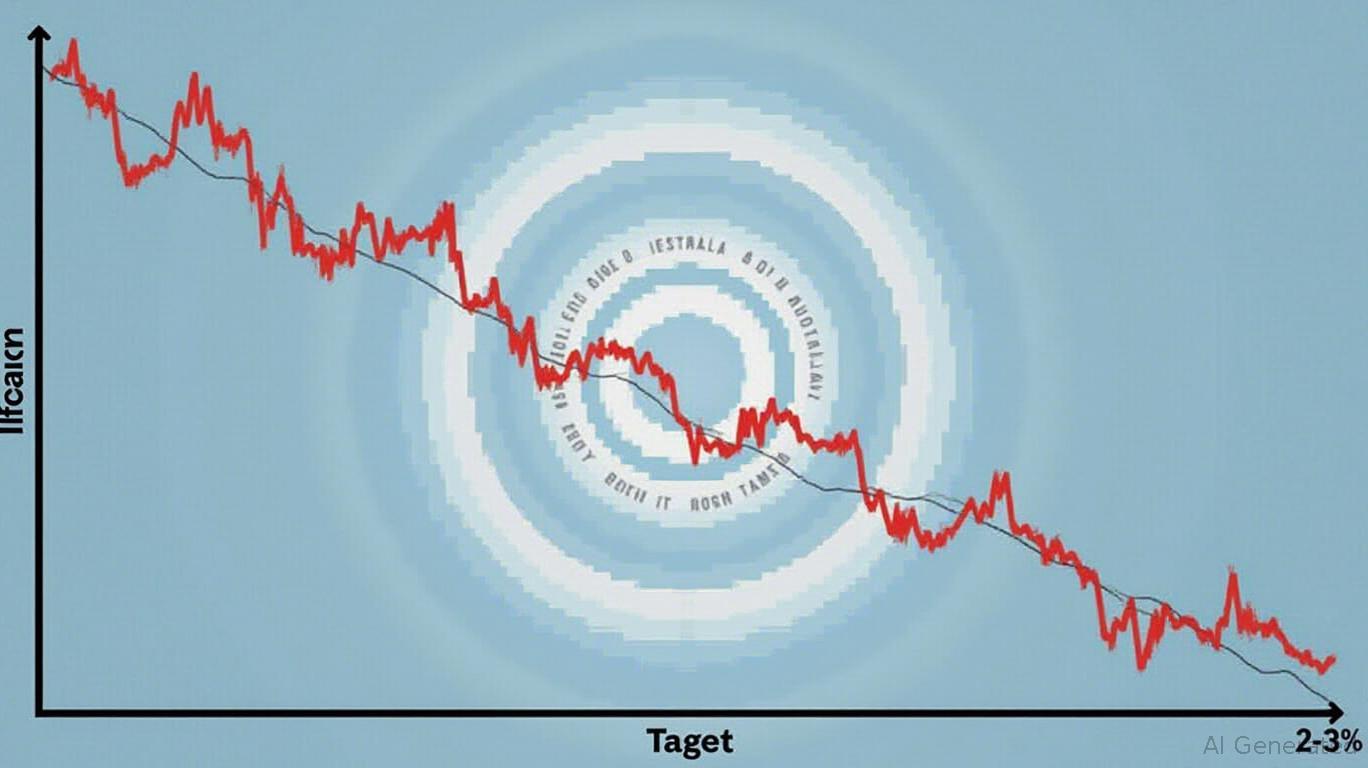The RBA's Cautious Turn: A Playbook for Navigating Australia's New Rate Reality
The Reserve Bank of Australia's (RBA) decision to cut rates by 25 basis points to 3.85% in May 2025 marks a pivotal moment for investors. While the move itself was modest, the rationale behind it—and the risks the
now openly acknowledges—paints a landscape ripe with opportunity for those willing to parse the nuances of inflation, trade, and policy. Here's how to position your portfolio for this new phase.The Inflation Pivot: A Goldilocks Scenario?
The RBA's easing comes as both headline and core inflation have retreated into its 2–3% target range—a milestone not seen since 2021. Trimmed mean inflation dipped to 2.9% in March, while headline inflation, boosted by temporary government subsidies, sits at 2.4%. The key takeaway? Inflation is tamed but fragile.

The RBA now projects inflation to drift higher in the short term (to 3.1% by mid-2026) as subsidies unwind but then ease back to 2.6% by 2027. This trajectory hinges on two critical assumptions: that global trade tensions don't escalate further and that domestic wage growth remains subdued. For investors, this creates a sweet spot: prolonged low inflation reduces the risk of a sudden rate hike, while the door remains open for further cuts.
Global Trade Uncertainty: A Bond Bull's Best Friend
The RBA's greatest concern isn't domestic—it's the U.S.-driven trade wars. Tariffs and policy volatility have already dampened global demand, dragging on Australia's GDP growth (now forecast at just 2.1% by year-end). This uncertainty is a double-edged sword for markets:
- For bonds: Trade volatility fuels demand for safe havens. Australian government bonds—already yielding around 3.5%—could see further inflows if trade tensions ratchet up.
- For equities: Sectors exposed to global supply chains (like industrials) face headwinds, but consumer discretionary stocks might thrive in a low-inflation, jobs-stable environment.
Labor Market: Tight, But Slowing
Unemployment remains stubbornly low at 4.1%, with wages growing modestly. Yet the RBA warns of a softening in private-sector wage momentum—a critical break from the post-pandemic surge. This suggests labor costs won't fuel inflation, freeing the central bank to stay accommodative.
For investors, this means:
- Consumer discretionary stocks (e.g., retailers, travel, and leisure) could outperform. A resilient labor market supports spending, even as wage growth slows.
- Underweight rate-sensitive sectors: Banks and insurers, which rely on higher rates for margins, face a prolonged period of pressure.
The Policy Crossroads: More Cuts Ahead?
Analysts are split on how far the RBA will go. While consensus predicts two more 25-bps cuts by year-end, some foresee a deeper easing cycle. Goldman Sachs, for instance, sees a terminal rate of 3.1%, while UOB's Sue Ann Lee envisions 2.85% by mid-2026.
The RBA's caution—opting for a 25-bps cut over a 50-bps “big move”—signals a preference for gradualism. This is a strategic advantage for investors: it avoids sudden market whiplash while keeping the door open for further easing.
The Tactical Playbook
- Bonds First: With global trade risks elevated and inflation unlikely to spike, Australian government bonds are a core hedge. Their yields remain attractive relative to near-zero rates in the U.S. and Europe.
- Consumer Discretionary: Lean into Resilience: Sectors like retail (e.g., Wesfarmers, Woolworths) and travel (e.g., Qantas) benefit from steady employment and low inflation-driven affordability.
- Avoid Rate-Dependent Plays: Banks (e.g., Commonwealth Bank) and insurers (e.g., IAG) face margin pressures as rates trend lower.
The Risk-Return Trade
The RBA's caution isn't just about rates—it's about preparing for worst-case scenarios. If trade tensions ease, growth could rebound, boosting equities. If they worsen, bonds and defensive stocks will shine. The sweet spot is owning both: a balanced portfolio that capitalizes on low inflation's tailwinds while hedging against global shocks.
Final Call
The RBA's latest move isn't just about today's rates—it's about setting the stage for years of accommodative policy. For investors, this is a buy signal for bonds and consumer stocks, paired with a disciplined avoidance of rate-sensitive sectors. Historically, buying the S&P/ASX 200 on RBA rate cut announcements and holding until the next meeting since 2020 has delivered a total return of 151.91%, outperforming the benchmark by 52.89%. While this approach carries risks—such as a 36.33% maximum drawdown—its returns highlight the potential rewards of aligning with accommodative monetary policy. In a world of trade wars and fragile recoveries, this strategy isn't just prudent—it's essential.
Act now before the next cut.

Comments
No comments yet